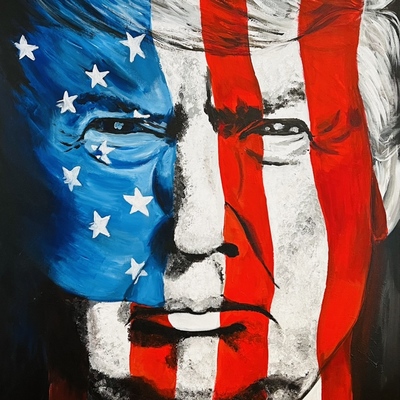Stay informed on the latest Truth Social posts from Donald Trump (@realDonaldTrump) without the doomscrolling. Consider it a public service for your mental health. (Why?)
- President Trump revealed details of a planned partnership between U.S. Steel and Nippon Steel.
- Trump plans to hike tariffs on imported steel to 50% from 25%.
- Higher tariffs would help establish a more equitable trade landscape.
- The Supreme Court ruled, allowing the Trump administration to strip temporary legal protections from 500,000 migrants.
- This ruling could expose nearly 1 million people to deportation.
- The previous lower-court order protected 500,000 migrants from Cuba, Haiti, Nicaragua, and Venezuela.
- Pittsburgh and Allegheny County officials are wary of their potential designation as 'sanctuary' jurisdictions.
- Pittsburgh and Allegheny County are under review by Homeland Security.
The announced plan to hike tariffs on imported steel to 50% from 25% is a significant trade policy change that would directly impact the steel industry, manufacturing, and construction sectors, potentially leading to increased domestic steel prices and input costs for companies. This could affect the earnings of S&P 500 companies in these sectors and contribute to inflationary pressures. The 'planned partnership' between U.S. Steel and Nippon Steel could also have specific impacts on the materials sector. Changes in immigration policy could have long-term labor market implications, but the immediate S&P 500 impact is less direct than the tariffs.
The proposed 50% tariff on imported steel could lead to trade disputes and retaliatory measures from trading partners, potentially straining international economic relations. However, the post does not contain any direct threats, ultimatums, or references to military action that would suggest an immediate likelihood of international conflict escalation.
- Commodities: A 50% tariff on imported steel would significantly impact steel prices globally. Domestic steel prices in the U.S. would likely rise, benefiting U.S. steel producers (e.g., U.S. Steel) but increasing costs for industries that consume steel. This could also affect iron ore prices. Gold (XAU) might see some upward pressure due to potential inflation from tariffs or increased trade tensions. Oil (WTI) impact is indirect, possibly related to overall industrial activity or trade slowdown. Short-Term Watchlist: Steel futures, iron ore prices, XAU/USD. Medium-Term Focus: Inflation trends, global manufacturing PMI.
- Currencies (Forex): The US Dollar Index (DXY) could strengthen as tariffs are perceived as a protectionist measure, potentially attracting capital or due to inflationary expectations. However, increased trade tensions could also create uncertainty, leading to safe-haven flows, which might still favor USD. Watch pairs like USDJPY and EURUSD for reactions to trade policy and risk sentiment. Short-Term Watchlist: DXY reaction to trade news, Treasury yields. Medium-Term Focus: Central bank policy divergence, global trade balances.
- Global Equities: S&P 500 industrial and materials sectors (including steel companies) would see direct impact; U.S. steel producers could benefit, while users of steel might face higher costs. Global equity markets, including STOXX 600, Nikkei 225 (due to Nippon Steel), and Hang Seng, could react to trade friction and potential retaliatory tariffs. Risk tone could deteriorate if trade wars escalate. Short-Term Watchlist: Steel company stocks, industrial ETFs, VIX. Medium-Term Focus: Earnings revisions, global supply chain adjustments, trade policy developments.
- Fixed Income (Bonds): U.S. 10Y and 2Y yields could rise due to increased inflation expectations stemming from tariffs. If trade tensions create a flight to safety, yields might fall, but inflation concerns could dominate. Credit spreads could widen if economic growth concerns arise from trade friction. Short-Term Watchlist: UST 10Y yield, inflation-linked bond performance. Medium-Term Focus: Fed's reaction to inflation, fiscal policy implications.
- Volatility / Derivatives: The VIX could spike in response to increased trade uncertainty and potential economic disruption from tariffs. Options positioning might reflect increased hedging demand. Short-Term Watchlist: VIX levels, equity implied volatility. Medium-Term Focus: Overall market uncertainty, macro policy shifts.
- Crypto / Digital Assets: Bitcoin (BTC) might behave as a risk-on asset initially, but could also see demand as a hedge against traditional financial system instability if trade wars escalate severely. Correlation with tech stocks might remain strong. Short-Term Watchlist: BTC/USD price action, correlation with equity indices. Medium-Term Focus: Macro liquidity environment, regulatory developments.
- Cross-Asset Correlations and Systemic Risk: Increased trade tensions could lead to breakdowns in normal correlations (e.g., bonds and equities selling off together if inflation and growth concerns combine). Watch for signs of stress in credit markets. Short-Term Watchlist: MOVE index, credit spreads. Medium-Term Focus: Central bank responses to inflation, global economic growth outlook.
- Retail Sentiment / Market Psychology: News of major policy shifts like tariffs and immigration crackdowns could influence retail sentiment, particularly for sectors directly affected or for politically sensitive assets. Retail investors might focus on domestic steel stocks or industries perceived to benefit from 'America First' policies. Short-Term Watchlist: Retail trading volume in affected sectors, social media trends on trade/steel. Medium-Term Focus: Influence of political rhetoric on specific stock narratives.

